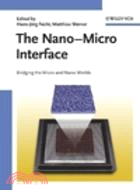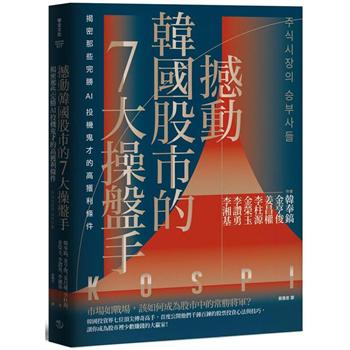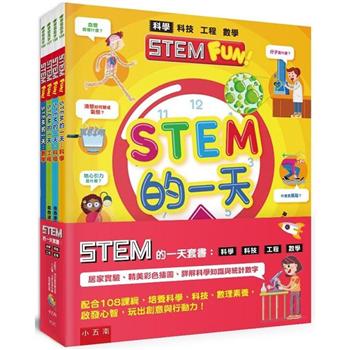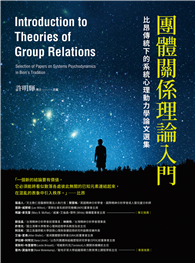目次Preface.
List of Contributors.
I Nanotechnology Research Funding and Commercialization Prospects U.S. National Nanotechnology Initiative: Planning for the Next Five Years (Mihail C. Roco).
1 Introduction.
2 Government R&D Investments.
References.
Technological Marketing for Early Nanotechnologies (Murielle Batude-Thibierge).
1 Introduction.
1.1 Managerial Synthesis with Recommendations.
1.2 Working Definitions.
1.3 Setting the Scene.
1.4 “Raison d’être” of Marketing, Especially for Nanotechnologies at Early Stages.
1.5 “Raison d’être” of Management Thinking and Strategic Planning for Nanotechnologies.
1.6 Problematic Nanotechnologies.
2 Marketing for a Nanotechnological Innovation.
2.1 Marketing Study Budget.
2.2 Collecting Information for Marketing Tools.
2.3 Technical Analysis.
2.4 Commercial Analysis.
2.5 Defining a Price.
2.6 Quantified Diagnostic and Simulations.
3 Management Thinking and Strategic Planning for Small Nanotechnology Businesses.
3.1 Strategic Planning: from Segment Action Plan to Business Action Plan.
3.2 Co-Developing with a Big Player.
3.3 Mastering the Translation Process.
3.4 Formulating a Strategy.
3.5 Implementing the Strategy.
4 Conclusions.
5 Appendix.
References.
Asia–Pacific Nanotechnology: Research, Development, and Commercialization (Lerwen Liu).
1 Nanotechnology Funding in the Asia–Pacific Region.
2 Commercialization Efforts.
3 Private Investment in Nanotechnology.
4 Advantages of Collaborating with Asians.
5 Appendix.
Cooperation with Small- and Medium-Sized Enterprises Boosts Commercialization (Torsten Schmidt).
1 The Company.
2 Scope.
3 Proposition: In Current Technology Markets, Commercial Success of New Product Ideas Evolves from Cooperation.
4 Proposition: Innovations Get on a Fast Track to Market if Implemented in SME.
5 Proposition: Competencies of SME and Inventors are Complementary Rather than Competing.
6 Summary.
References.
Rapid Commercialization of Nanotechnology in Japan: from Laboratory to Business (Hiromichi MaenoI).
1 Background: Japan at the Crossroads.
2 Motivation and Strategy: Shake up Unique People.
3 Research and Development of a New Idea.
4 Pump Priming and Leadership.
5 Nanotechnology Activities.
5.1 Bio Nanotec Research Institute, Inc. (BNRI): Zeolite Membranes.
5.2 Carbon Nanotech Research Institute, Inc. (CNRI): Clean Single-Walled Carbon Nanotubes.
5.3 Device Nanotech Research Institute, Inc. (DNRI).
5.4 Ecology Nanotech Research Institute (ENRI): Metallofullerene.
5.5 INRI, Inc. (for Intellectual Property): Approach and Strategy.
6 Conclusions.
Nanomaterials and Smart Medical Devices (Ottilia Saxl).
1 Introduction.
2 Why are we Seeing Advances Now?
3 Conclusion.
II Fundamentals and Technology Bridging Dimensional and Microstructural Scaling Effects (Uwe Erb, Cedric Cheung, Mohammadreza Baghbanan, and Gino Palumbo).
1 Introduction.
2 Nanocrystalline Materials.
3 Nano/Microsystem Technology.
4 Present Gap Between Nanomaterials and Nano/Microsystem Technology.
5 Bridging Dimensional and Microstructural Scaling Effects.
6 Conclusions.
References.
Bridging the Gap between Nanometer and Meter (Matthias Meyer, Jürgen Koglin, and Thomas Fries).
1 Introduction.
2 Motivation.
3 Bridging the Gap.
4 Examples of Measurement.
4.1 Structured Si Wafer.
4.2 Bump Measurements.
4.3 LED Housing.
4.4 Film Thickness Measurement.
4.5 Elastic Properties with AFAM.
References.
Nanometer-Scale View of the Electrified Interface: Scanning Probe Microscopy Study (Peter Müller, Laura Rossi, and Santos F. Alvarado).
1 Introduction.
2 STM z–V Spectroscopy.
3 Experimental Details.
3.1 Alq3 Thin Films on Au(111).
3.2 CuPc Thin Films on Au(111).
4 Concluding Remarks.
References.
New Technology for an Application-Specific Lab-on-a-Chip (Heike Schäfer, Steffen Chemnitz, Konstantin Seibel, Volodymyr Koziy, Alexander Fischer, Dietmar Ehrhardt, and Markus Böhm).
1 Introduction.
2 Fabrication Technologies.
3 Experimental Results.
3.1 Amorphous Silicon Pin-Diodes.
3.2 Amorphous Silicon Thin Film Transistors.
3.3 Microfluidic Devices.
4 Conclusions.
References.
Impact of Nanoscience on Heterogeneous Catalysis (Sharifah Bee Abd Hamid and Robert Schlögl).
1 Introduction.
2 Nanotechnology in Catalysis.
3 Electronic Structure and Catalysis.
4 Geometric Structure and Catalysis.
5 Large Nano-Objects in Catalysis.
6 The Semiconductor Approach.
7 The Combicat Approach.
8 Conclusions.
References.
Biomimetic Nanoscale Structures on Titanium (Ralf-Peter Franke).
1 Introduction.
2 Biocompatibility.
References.
Microwave-Driven Hydrothermal Synthesis of Oxide Nanopowders for Applications in Optoelectronics (Witold Lojkowski, Agnieszka Opalinska, Tomasz Strachowski, Adam Presz, Stanislaw Gierlotka, Ewa Grzanka, Bogdan Palosz, Wieslaw Strek, Dariusz Hreniak, Larisa Grigorjeva, Donats Millers, Federica Bondioli, Cristina Leonelli, and Edward Reszke).
1 Introduction.
2 Experimental Methods.
2.1 The Reactor for the Synthesis of Nanopowders.
2.2 Hydrothermal Synthesis of ZnO, ZrO2, and Zr1–xPrxO2.
2.3 Characterization of the Powders.
2.4 Sol-Gel Synthesis of YAG doped with 1% Nd.
2.5 Investigations of Luminescence Properties.
2.6 Sintering.
3 Results and Discussion.
3.1 The Properties of the Powders.
3.2 Investigations of Luminescence.
3.3 Luminescence of Sintered and Not Sintered YAG Nanocrystals.
4 Conclusions.
References.
New Approach to Improve the Piezoelectric Quality of ZnO Resonator Devices by Chemomechanical Polishing (Jyrki Molarius, Martin Kulawski, Tuomas Pensala, and Markku Ylilammi).
1 Introduction.
2 Experimental.
3 Results and Discussion.
4 Conclusions.
References.
Self-Assembled Semiconductor Nanowires (Theodore I. Kamins).
1 Introduction.
2 Growth.
3 Positioning Nanowires.
3.1 Stability.
4 Transistors and Sensors.
4.1 Interface Control and Insulator Material.
4.2 Device Stability.
4.3 Doping.
4.4 Device Physics.
4.5 Mobility.
4.6 Contacts.
5 Conclusion.
References.
3D Nanofabrication of Rutile TiO2 Single Crystals with Swift Heavy-Ions (Koichi Awazu, Ken-ichi Nomura, Makoto Fujimaki, and Yoshimichi Ohki).
1 Introduction.
2 Experimental.
3 Results.
4 Discussion.
5 Conclusions.
References.
III Applications
Nanoparticles-Based Chemical Gas Sensors for Outdoor Air Quality Monitoring (Marie-Isabelle Baraton and Lhadi Merhari).
1 Objectives.
2 Current Status of Semiconductor Sensors.
3 New Paradigms for the Advancement of Semiconductor Sensors.
3.1 Advantage of Using Nanoparticles.
3.2 Control of the Physical and Chemical Properties of Nanoparticles.
3.3 Optimization of the Screen-Printing Process.
4 Results.
4.1 Characterization of Nanoparticles.
4.2 Surface Chemistry of Nanoparticles.
4.3 Rapid Screening of the Sensing Potential of the Nanoparticles.
4.4 First Optimization Stage of the Screen-Printing Process.
4.5 Second Optimization Stage of the Screen-Printing Process.
5 Outlook.
References.
Amorphous Electrically Conducting Materials for Transducer Applications (Alex Dommann, Marco Cucinelli, Matthias Werner, and Marc-Aurele Nicolet).
1 Introduction.
2 Mictamict Alloys.
3 Thin Films.
4 Properties of Ta–Si–N Films.
5 MEMS of Ta–Si–N Films.
6 Surface Micromachining of Ta–Si–N Microbeams.
7 X-Ray Analysis of Ta–Si–N Films.
8 Ta–Si–N Thin Films as Diffusion Barriers for Cu Metallization.
References.
Commercial Applications of Diamond-Based Nano- and Microtechnology (Peter Gluche, André Flöter, Stephan Ertl, and Hans-Jörg Fecht).
1 Introduction.
1.1 Properties of Diamond.
1.2 Synthesis of Diamond.
2 Commercial Applications: Cutting Tools and Micromechanical Diamond Parts 251
2.1 Diamond Cutting Tools.
2.2 Diamond Micromechanical Parts.
3 Summary.
References.
Bio-Inspired Anti-reflective Surfaces by Imprinting Processes (Thomas Sawitowski, Norbert Beyer, and Frank Schulz).
1 Introduction.
2 Aluminum Oxide: Template and Lithographic Tool.
3 Reflection of Light.
4 Anti-reflective Coatings and Surface Structures.
4.1 Plasma Coating.
4.2 Porous Ceramics.
4.3 Moth-Eye Structures.
5 Surface Wetting.
6 Conclusions.
References.
Preparation and Properties of MgO–Ni(Fe) Nanocrystalline Composites (Oldřich Schneeweiss, Naděžda Pizúrová, Yvonna Jirásková, and Tomáš Žák).
1 Introduction.
2 Experimental.
3 Results and Discussion.
4 Conclusions.
References.
Nanocrystalline Oxides Improve the Performances of Polymeric Electrolytes (Silvia Licoccia and Enrico Traversa).
1 Introduction.
2 Results and Discussion.
2.1 Direct Methanol Fuel Cells.
2.2 Lithium Ion Polymeric Batteries.
2.3 Electrophysiological Measurements.
3 Conclusions.
References.
Optimized Electromechanical Properties and Applications of Cellular Polypropylene, a New Voided Space-Charge Electret Material (Michael Wegener and Werner Wirges).
1 Introduction.
2 Investigations on Cellular PP.
2.1 Film Preparation.
2.2 Electro-Active Properties.
2.3 Assessment of the Charging Process.
3 Applications.
3.1 Proposed Electromechanical and Electroacoustical Transducer Concepts.
3.2 Control Panels with Pushbuttons Made of Cellular PP Electrets.
3.3 Concept for Vibration Control.
3.4 Concept for Active Noise Control.
4 Conclusions.
References.
Subject Index.











